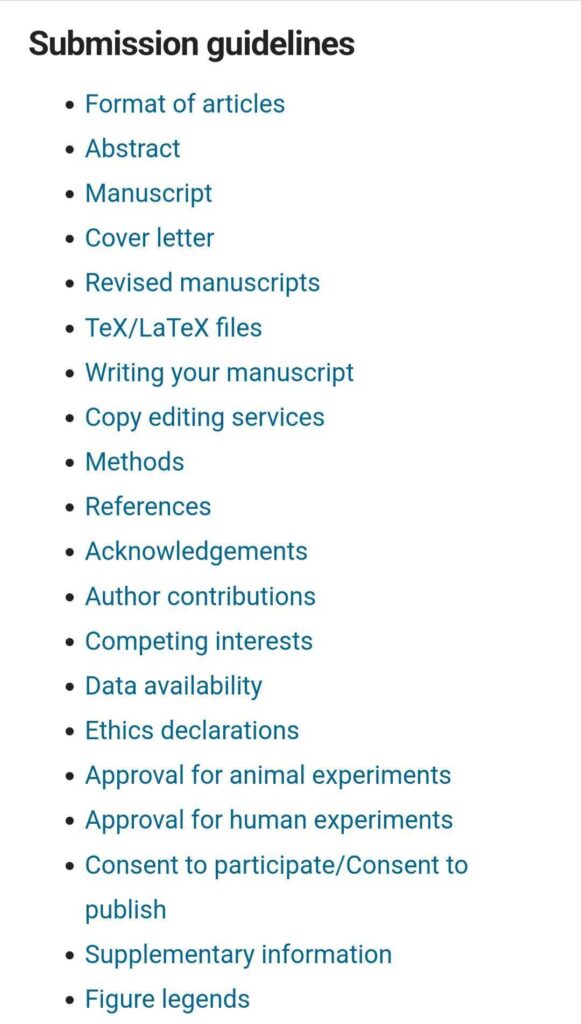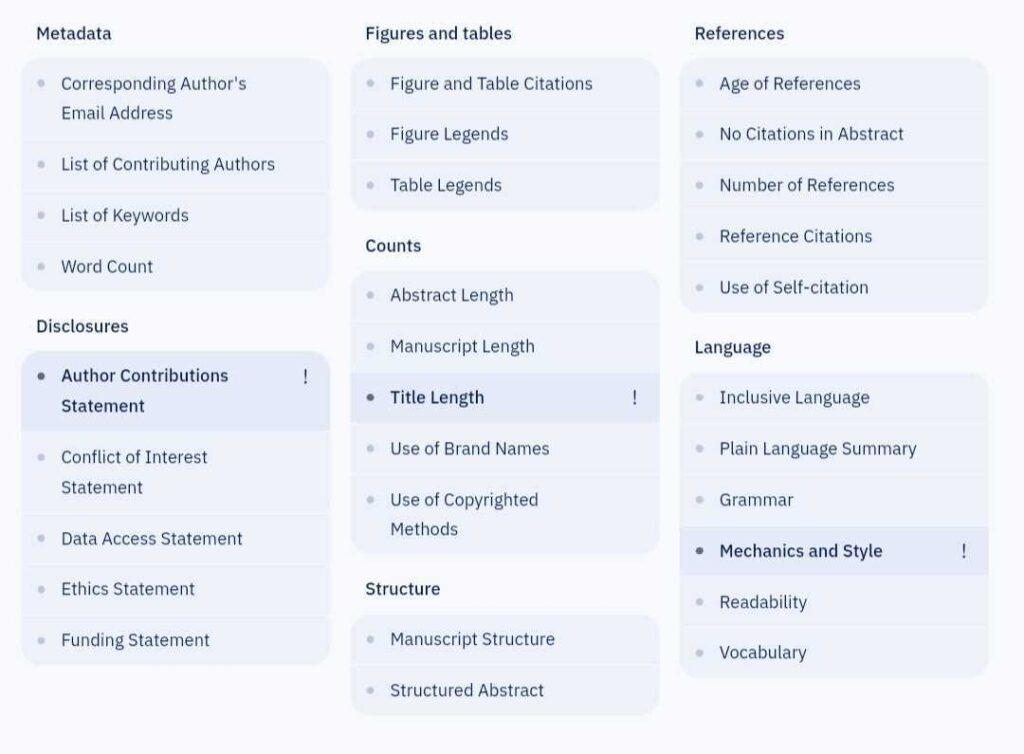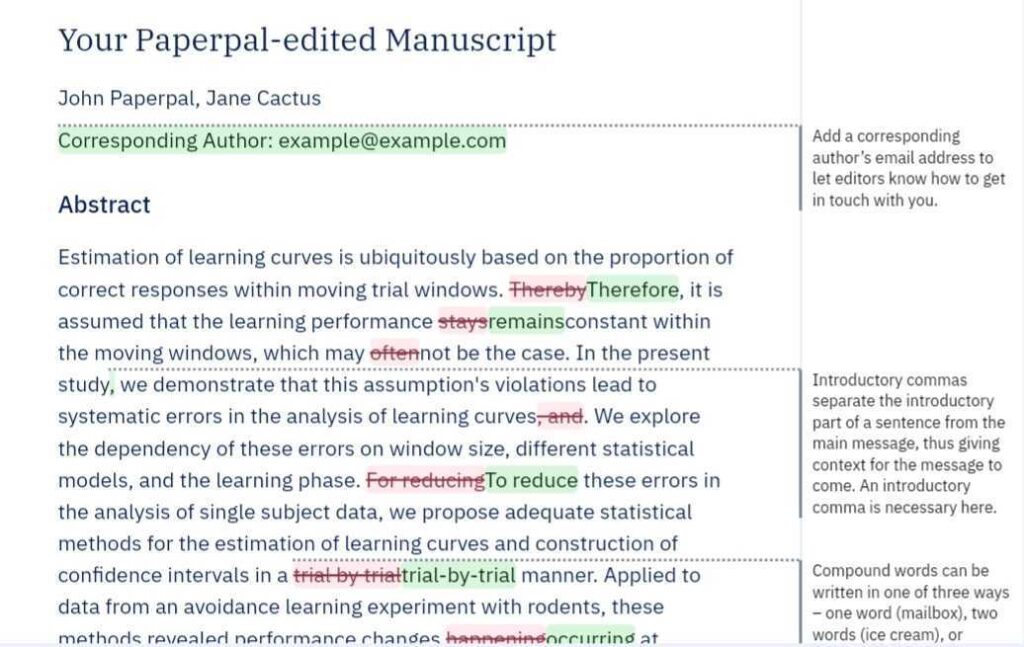As a researcher, it is a moment of great joy—and profound relief—to have the final draft of your manuscript ready for journal submission. Now, after all the work you’ve put in, imagine your manuscript being returned without being accepted for peer review. This can be deeply disappointing, especially if this is due to minor lapses like not adding a conflict of interest statement or an ethics statement. The outcome? An easily avoidable snag that delays your celebration of manuscript acceptance.
Does this scenario seem far-fetched? No! This is often the harsh reality of academic publishing. Peter Thrower, PhD and former Editor-in-Chief of Carbon, lists a manuscript’s failure to pass the key technical screening as a crucial reason for rejection even before it reaches the editorial desk1. Assuming that the scientific aspects of a study are sound, issues like missing ethics statements, outdated references, poor language quality, etc., are among the other top reasons for desk rejection2.
Authors are spoilt for choice when it comes to manuscript submission, with the number of academic journals continually expanding. However, each journal comes with its own set of instructions and manuscript submission guidelines, which can be tricky and even intimidating for authors, particularly first-time authors. That being said, most journals have a core set of submission requirements that are more or less similar. This covers, but is not limited to, guidelines on manuscript metadata, disclosures, figures and/or tables, word counts, references, and language. These components are required in most full-text research articles, and meeting the journal requirements for each of these elements is essential to improve the odds of your manuscript passing the initial technical screening stage.
With so many pre-submission checks to do, is there a way to ascertain whether these requirements have been met with a click of a button? Enter Paperpal Preflight, an AI-powered manuscript submission readiness check that ensures your manuscript will never fail the technical checks for submission!
Paperpal Preflight: your trusted ally in the manuscript submission process
Trained on millions of editorial corrections, Paperpal Preflight is a revolutionary AI tool that assesses the pre-submission readiness of your academic manuscripts. This robust AI-powered tool quickly scans your manuscript, conducting technical checks for compliance with key journal requirements and identifying potential language errors that could hamper your chance of journal acceptance.
How exactly does Paperpal Preflight work?
Nature Scientific Reports has an extensive list of requirements for paper/thesis submission3, categorized based on respective manuscript sections. That is, all stylistic and technical requirements of each section—abstract, main text, references, etc.—are listed in the order of their appearance in the manuscript (see Figure 1). While this is a neat and orderly format, processing and identifying each and every requirement can be a daunting task for authors, as it involves careful reading and understanding of each line of text in the guidelines page.
Paperpal Preflight simplifies this process considerably. It classifies all the submission requirements under specific technical categories. You only have to upload the final draft of the manuscript for processing by Paperpal Preflight. The AI tool scans your paper and checks it against the relevant journal requirements, promptly flagging inadequacies and explaining it in a way that they can be easily addressed.

Top pre-submission checks you get with Paperpal Preflight
1. Language and grammar evaluation
At the core of Paperpal Preflight is an AI-powered language and grammar error correction tool that scores various aspects of English language, including grammar, readability, and vocabulary. Authors can also download their document with language suggestions incorporated in tracked changes. Not only does this help you quickly improve your manuscript language, this key check ensures your manuscript is never rejected because of poor language.
2. Reference quality assessment
Paperpal Preflight individually analyzes each citation and reference in a manuscript. It checks for one-to-one correspondence between the citations and reference, how old the references are, the number of references included, and the use of self-citations.

3. Structural compliance and adherence to word count
The AI engine behind Paperpal Preflight also scans manuscripts to ensure the presence of all the recommended structural components for journal submission (e.g., IMRAD format). These checks validate the presence of all pertinent information, such as aim, rationale, introduction, conclusion, etc., within a manuscript, while also assessing the word count limitations within these sections.

4. Figures and tables
Paperpal Preflight also checks the paper for table and figure citations within the main text and validates the presence of respective captions within a manuscript. Missing citations or captions are promptly flagged so you can fix them before you submit to avoid desk rejection.
5. Key metadata and disclosure statements
The AI tool also verifies the presence of relevant metadata (author names, affiliations, email IDs, keywords, etc.) and standard statements (conflict of interest statement, data availability, ethics statement, funding information, etc.).
Isn’t that simple? With Paperpal Preflight’s roster of detailed language and technical checks, authors need not worry about missing details within lengthy journal guidelines. And no more fretting about the possibility of desk rejection due to these avoidable misses!

An advanced solution to facilitate manuscript submission in the age of automation, Paperpal Preflight ensures your article submission process is as simple as it can get. Preflight is also the preferred partner for several academic publications—Medicine (Wolters Kluwer Health), IEEE Access, IOP Science, and Royal Society Open Science among others.
Paperpal is your trusted advisor in your publication journey. So, if you’re ready for manuscript submission, use Paperpal Preflight or look for this AI pre-submission check on your target journal website. Leave the boring stuff to us, so that you can focus on what matters to you!
References
1. Thrower, P. Eight reasons I rejected your article. Elsevier Connect, September 2012. Available at: https://www.elsevier.com/connect/8-reasons-i-rejected-your-article [Accessed August 12, 2022].
2. How to submit a manuscript – Common Rejection Reasons | Authors | Springer Nature. Available at: https://www.springernature.com/gp/authors/campaigns/how-to-submit-a-journal-article-manuscript/common-rejection-reasons [Accessed August 12, 2022].
3. Submission guidelines | Scientific Reports, Nature.com. Available at: https://www.nature.com/srep/author-instructions/submission-guidelines [Accessed August 12, 2022].
Paperpal is a comprehensive AI writing toolkit that helps students and researchers achieve 2x the writing in half the time. It leverages 23+ years of STM experience and insights from millions of research articles to provide in-depth academic writing, language editing, and submission readiness support to help you write better, faster.
Get accurate academic translations, rewriting support, grammar checks, vocabulary suggestions, and generative AI assistance that delivers human precision at machine speed. Try for free or upgrade to Paperpal Prime starting at US$19 a month to access premium features, including consistency, plagiarism, and 30+ submission readiness checks to help you succeed.
Experience the future of academic writing – Sign up to Paperpal and start writing for free!



